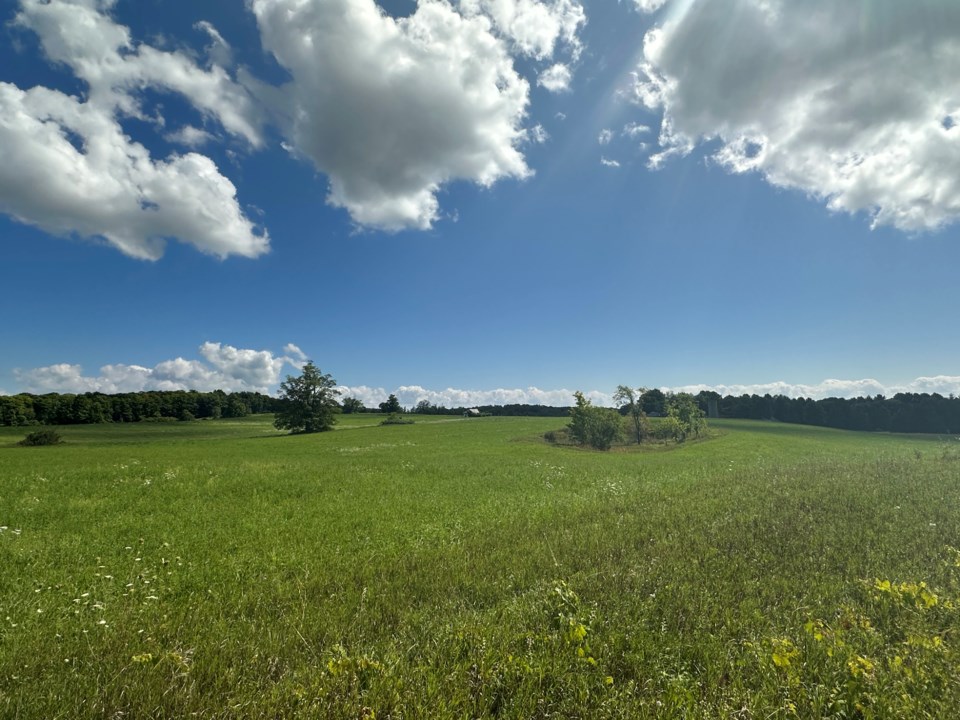With the City of Orillia’s boundary expansion on the horizon, a local Realtor hopes to reduce the environmental effects of annexing and developing land from neighbouring townships.
Kelly Lawless is the agent for 102 acres of land in Oro-Medonte, at 1105 Line 14 N., which he argues is a better fit for the city’s boundary expansion than the Line 15 North land proposed for annexation from the township.
Lawless has particular concerns about the land at 932 and 886 Line 15 N., which is prime agricultural land containing significant natural features, he told OrilliaMatters.
“They have (core deer wintering areas); they have natural heritage, like woodlots,” he said. “There's going to be a lot of tree cutting. They have wetlands, and they have species at risk that are potentially going to be dealt with.”
The current boundary expansion proposal encroaches on wetlands, like Langman’s Marsh, and development in the area could bring increased traffic along Bass Lake Sideroad, which could affect wildlife in the area, Lawless argued in a letter to the city.
In comparison, the Line 14 North property he represents is secondary agricultural land, which is less productive and contains fewer wetland features.
“When you go to other land, like the property that I have, it is mostly cleared; it's high elevation,” he said. “That land has the highest elevation around Orillia — 300 metres above sea level — which lends itself to water towers, sewer drainage, and, also, it’s close to the university.”
On the alternative property, development would likely take place closer to Old Barrie Road, which Lawless contends will help keep traffic away from the “already congested” intersection at Highway 12 and West Ridge Boulevard.
He also said the Line 14 property would lend itself well to renewable energy development and outdoor recreation.
“It’s open. It’s terraced properly for passive solar design development,” he said. “It has the Trans-Canada pipeline corridor going through it, which lends itself to trails, and you can run roads over it.”
An open invitation has been extended to city staff and council to visit the Line 14 property, Lawless said, noting he has been trying to garner city attention for the idea for more than a year.
He questioned the city’s rationale for including the Line 15 North land in the proposed boundary expansion, and said he has had the appropriate professionals confirm his concerns.
“I’ve already had ecologists and environmental scientists do a preliminary desktop study, and they can see the potential of this property and the problems with the other properties in comparison,” Lawless said.
With significant growth anticipated in the coming decades, the city needs to build 7,330 new housing units in the next 30 years, the city website states, and council will ultimately need to decide whether to accommodate the housing units within the city’s current boundaries or within parts of the future boundary expansion land.
Lawless said he is not opposed to development, but he has concerns about future development on land with significant natural features.
“The city needs land, but pick the proper land — that’s all I’m saying,” he said. “It may not be this land, and I can accept that, but I don’t think it’s being given a fair shake.”
City staff said “many factors” were considered in selecting the proposed boundary expansion land, “including the ability to extend municipal services in a cost-effective manner and to ensure the future lands will be connected and contiguous to the existing municipal boundaries,” said senior planner Jill Lewis.
Certain areas along Line 15 North are excluded from development due to natural heritage features, and Lewis said the city will require studies before boundary expansion land is developed.
“Prior to the development of any lands within the expansion lands, the city will require a full environmental impact study to be undertaken to ensure no negative impact to natural heritage features and areas,” she said. “Significant natural heritage features and areas will be protected from development.”
She also said an agricultural impact assessment will be required prior to developing any prime agricultural land.
